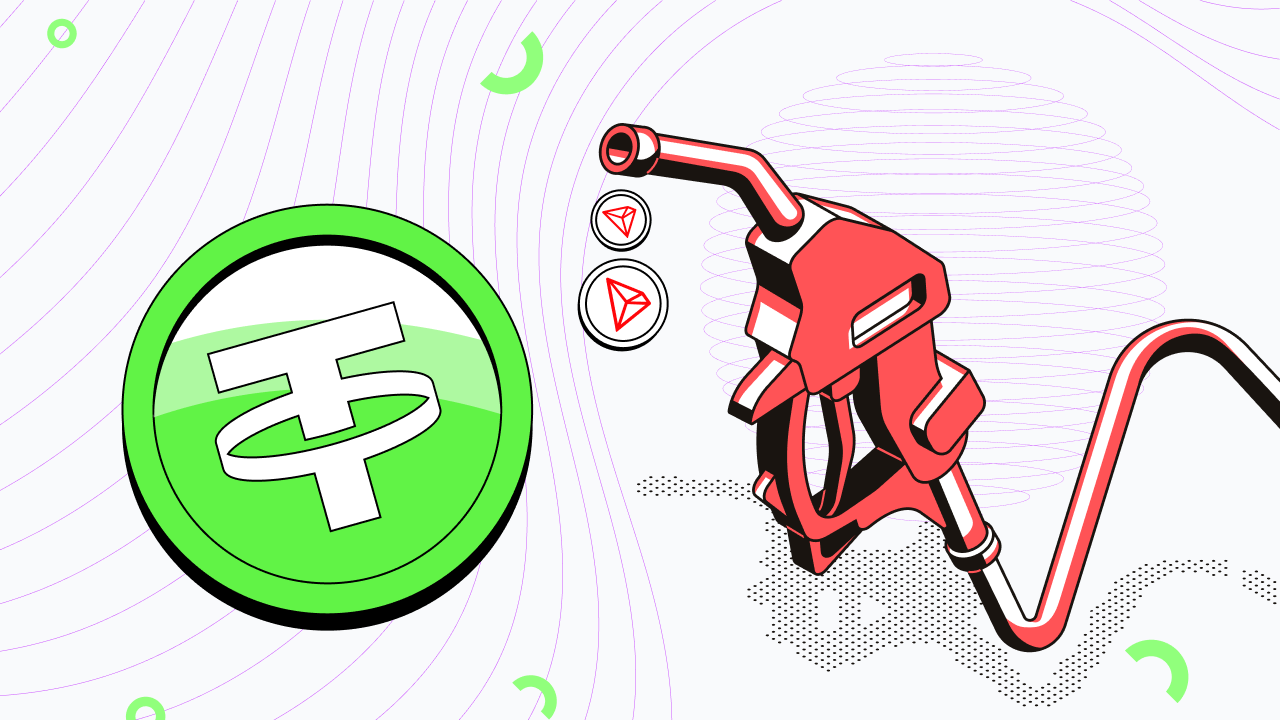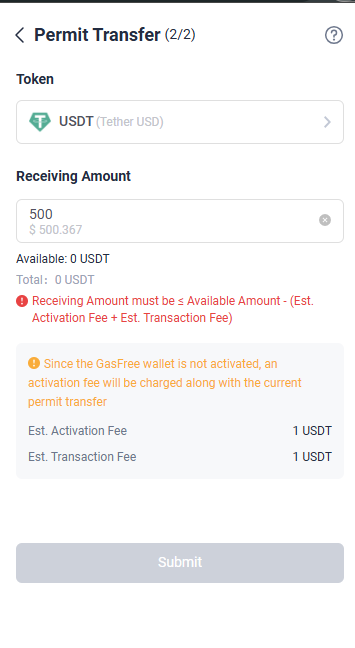The Tron blockchain has made a breakthrough by introducing the Gas Free feature, which allows users to transfer USDT (TRC-20) without having to pay fees in TRX.

The solution removes one of the main barriers to mass adoption of cryptocurrencies – the complexity of use and additional gas costs. With the launch of Tron Gas Free, the network becomes more convenient for transfers, payments, and integrations into various dApps.
What is GasFree Tron?
Gas Free Tron is a new feature on the Tron blockchain that allows USDT (TRC-20) transactions to be made without the need to hold TRX in a wallet to pay fees. Instead, the gas cost is automatically deducted from the USDT transfer amount.
Why is Gas Free feature needed in Tron network?
The Tron Gas Free feature was developed to address key issues users have encountered with USDT (TRC-20). Let's look at the main issues:
1.Need to hold TRX for fees
Previously, to transfer USDT, the user had to have TRX on the balance to pay for transactions. This created inconveniences:
- Newbies didn't understand why they needed TRX if they only wanted to work with USDT;
- Businesses are forced to maintain a balance of two cryptocurrencies (USDT + TRX), complicating accounting;
- Stablecoin investors are reluctant to buy TRX for the sake of transactions.
Now the commission is debited directly from USDT.
2.Complexity of calculating commissions
In the already traditional Tron model, fees depend on:
- Availability of Energy (for smart contracts);
- Availability of Bandwidth (for simple TRX transfers);
- TRX market price.
3.High transaction costs
At the end of 2024, Tron fees reached $9 per USDT transfer, making the network less profitable than, for example, Ethereum, where fees dropped to $0.40 after updates.
4.Barriers to mass adoption
Many users (for example, those receiving salaries in USDT) did not want to understand:
- The difference between TRX and USDT;
- Principles of Energy/Bandwidth operation;
- Wallet activations.
Who can use the Gas Free Tron feature?
The Gas Free Tron feature is useful for a wide range of users:
Individuals (P2P transfers)
- Regular users who frequently exchange or send USDT;
- Traders who frequently move USDT between exchanges.
Businesses and merchants
- Online stores, services, exchangers, exchanges that accept USDT (no need to convert TRX).
Decentralized applications (dApps)
- DeFi platforms where users can interact with protocols without having TRX;
- Gaming dApps – micropayments in USDT without gas;
- NFT marketplaces – buying tokens directly for USDT.
Institutional players
- Crypto funds managing stablecoins;
- Payment gateways integrating USDT transactions;
- Payment systems and services working with international transfers.
Impact of Gas Free Tron on the Market
The implementation of Gas Free Tron has a complex impact on the crypto market:
Competition among blockchains
Direct competition with blockchains such as Ethereum (ERC-20) or Solana (SOL) for USDT transactions. This also entails a potential outflow of users from networks with high fees.
Impact on the TRX token
Previously, the TRX token was required for all transactions on the Tron network. With the launch of Gas Free Tron, users do not need to purchase TRX, which leads to periods of decreased demand for the token and affects the market price of TRX.
Increased network load
Reducing the cost of transfers and simplifying the mechanics of transactions may lead to increased activity and increased load on the network. The more transactions, the higher the requirements for throughput. Tron will have to maintain stable operation under increased loads.
Redistribution of USDT volumes
Gas Free contributes to the increase in the share of USDT TRC-20 in the stablecoin market, as well as the growth of USDT transaction volume on the TRON network.
Impact on the DeFi sector
Simplification of interaction with dApps leads to an increase in TVL of various decentralized services and applications, the emergence of new protocols with a focus on USDT transactions.
Gas Free Tron Limitations and Pitfalls
While the Gas Free feature does make transfers easier and cheaper, a closer look reveals some important nuances that are worth considering:
Mandatory activation of new wallets
For a new address to be fully operational on the Tron network, an initial activation of 1 USDT or 1 TRX is required.

This one-time payment provides:
- Correct functioning of the wallet;
- Possibility of receiving and sending funds;
- Access to all network functions.
Without going through this procedure, the user may encounter limitations in working with the blockchain.
Unobvious additional costs
- Individual services may impose their own fees;
- The conditions for writing off funds are not always clearly stated.
New users may not notice additional fees, especially when it comes to transactions via third-party apps and exchange services.
These factors are important to consider for both regular users and businesses planning to integrate with the Tron network. While Tron Gas Free represents a significant step forward, its mass adoption will require time and refinement.
Energy Rental or GasFree?
The Tron ecosystem provides users with a wide range of options for managing transaction costs. When performing basic operations with TXR and TRC-10 tokens, there are various options for paying fees: settling in TRX or using the Bandwidth resource.
The GasFree mechanism is an implementation of the metatransaction concept in the Tron ecosystem. That is, the real costs of commissions are borne by the sponsor of the smart contract, which acts as a service provider. Its operation is based on the following principles:
- The user initiates the transfer through a special smart contract;
- Commission costs (TRX, Energy, Bandwidth) are covered by the service sponsor;
- Refunds are made automatically via USDT debit.
This solution is convenient for those who want to avoid the need to manage multiple types of assets.
When working with USDT and TRC-20 tokens, users have access to an expanded choice:
- The classic option is payment exclusively in TRX;
- Hybrid model – a combination of Energy and Bandwidth with possible TRX burning in case of insufficient resources;
- Completely gas-free transactions via TRON GasFree with payment in USDT.
However, the GasFree function has a number of disadvantages:
- Limited support – only works in TRON wallets and services that support the function;
- Providers may stop supporting GasFree without notice;
- Additional costs, including hidden fees and transaction limits;
- Potentially high cost – fees may exceed standard fees;
- Start-up costs – wallet activation requires additional USDT.
This means that GasFree Tron may be an inefficient solution, meaning that using energy to conduct operations in TRON is much more economical. There are two ways to get energy:
- Staking a significant amount of TRX;
- Rent through TR.ENERGY.
Energy lease provides temporary access to the network's computing resources, which allows:
- Eliminate the mandatory need to use TRX;
- Significantly reduce transaction costs;
- Work with all types of smart contracts;
- Compatible with all TRON wallets and services;
- Flexibility of use with the ability to select the required volumes and rental periods;
- Full automation of processes and access via a user-friendly interface.
Renting Energy is suitable for everyone, from large USDT holders to private traders and users who regularly interact with DeFi and smart contracts. It is a way to avoid inefficient costs that can be easily optimized with TR.ENERGY.
Development and Prospects of GasFree TRON
GasFree technology in the Tron ecosystem is not only being developed for internal use - the project team is actively working on adapting it to other blockchains, including Ethereum and other EVM-compatible networks. The cross-chain approach can significantly accelerate the mass adoption of stablecoins, while strengthening Tron's position as one of the key players in the industry.
Tron founder Justin Sun is personally overseeing the development of the feature, encouraging wallet and dApp developers to actively implement GasFree support through integration with JustLend DAO, the network’s main lending platform. In parallel, Tron is strengthening its position in the global market, in particular through a strategic partnership with World Liberty Financial (WLFI) and a $75 million investment aimed at expanding the project’s influence in the blockchain sector.
Conclusion
Tron's Gas Free feature is an important step towards making cryptocurrency easier to use, especially for those using USDT (TRC-20). It eliminates the need to hold TRX for fees, making transfers more convenient and accessible. However, at the moment, the functionality cannot guarantee stable savings for users. It is better to look for more profitable ways to interact with TRON, for example, renting energy from TR.ENERGY.